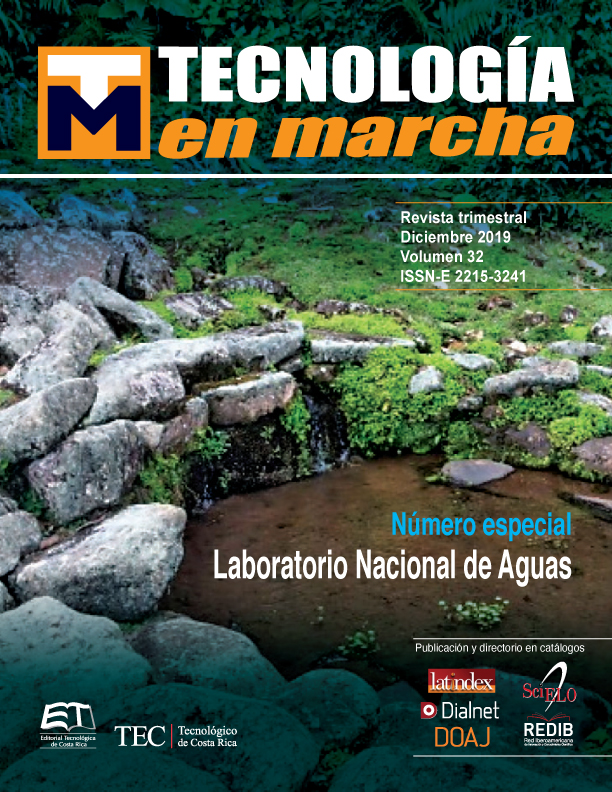Risk assessment of the Costa Rican beaches during the period 2010-2017
Main Article Content
Abstract
To determine the sanitary risk assessment (ERS) of 184 beaches located in both the Pacific and Atlantic coast through the application of the Sanitary Risk Index (IRS) combining the faecal coliform bacteria geometric mean (CF/100 ml) of the inland water sources (streams, estuaries, wetlands and waste water discharges) with the microbiological quality of the sea water sampling points at the beaches. The aim is to establish corrective measures and to scheme the coast areas development. The data from 184 beaches were analysed (62 in Guanacaste, 86 in Puntarenas and 36 in Limón) in the National Water Laboratory (Laboratorio Nacional de Aguas, LNA) during the years 2010-2017. IRS was applied to inland water sources and sea water samples, in order to describe the risk as non-existent, Very Low, Low, Moderately High, High, and Very High. ERS classified the sanitary risk of the 184 beaches: 16 obtained Very High Risk (8.69 %), 4 High Risk (2.17 %), 7 Moderately High Risk (3.80 %), 16 Low Risk (8.69 %), 4 with Very Low Risk (22.28 %), and 100 showed non-existent risk. Results show an important difference between the ERS and the microbiological sea water quality. Additionally, the sanitary risk of 27 beaches (14.67 %) varied from Moderately High to Very High. The majority of the beaches, 157 (85.33 %), obtained a sanitary risk from Low to non-existent. On the other hand, 179 beaches (97.3 %) showed geometric means less than or equal to 100 CF/100 ml, and 134 beaches (72.8 %) showed geometric means less than or equal to 10 CF/100 ml. To carry out sanitary surveys and deeper studies within the 27 beaches classified with Moderately High, High and Very High Risk, in order to define corrective measures, and buffer the faecal pollution.
Article Details
Los autores conservan los derechos de autor y ceden a la revista el derecho de la primera publicación y pueda editarlo, reproducirlo, distribuirlo, exhibirlo y comunicarlo en el país y en el extranjero mediante medios impresos y electrónicos. Asimismo, asumen el compromiso sobre cualquier litigio o reclamación relacionada con derechos de propiedad intelectual, exonerando de responsabilidad a la Editorial Tecnológica de Costa Rica. Además, se establece que los autores pueden realizar otros acuerdos contractuales independientes y adicionales para la distribución no exclusiva de la versión del artículo publicado en esta revista (p. ej., incluirlo en un repositorio institucional o publicarlo en un libro) siempre que indiquen claramente que el trabajo se publicó por primera vez en esta revista.

